Serious Fun

Set up in what appears to be the parking lot outside the Eames Office, Carton City apes the fictional community of Mayberry, with stop signs, neighborly visiting, even miniature landscaping © Eames Office, LLC
Ray and Charles Eames took child’s play seriously. They invented playthings, furniture, and films to spark, but never limit, the young imagination. Given their own ideas of fun, these toys tended to emphasize composition, structure, and building, giving children the tools of their own adult trades in miniature (and giving some adults the chance to make like children again). Many of their designs embrace what kids and parents have long known: that the box an item comes in, especially if it’s a very large item, can be more exciting than the contents.
So it comes as no surprise that the Eameses improved the box itself, as a portfolio of photographs unearthed from the Herman Miller Archives reminds us. The humble cardboard box offers children their first chance to make space for themselves, whether that’s a racecar, a robot, or a house, sprouting from the shipping container the Eames Office designed in 1951 for the Eames Storage Units (ESUs).
Portfolio | Detroit Modern

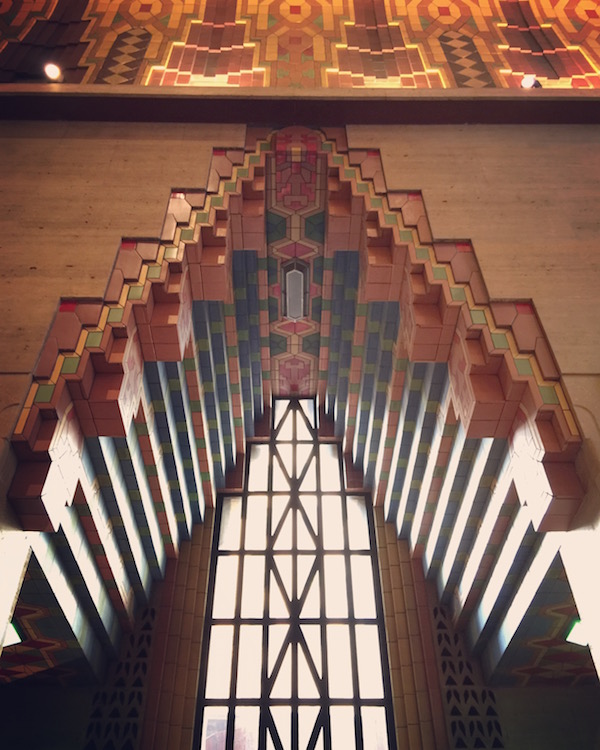
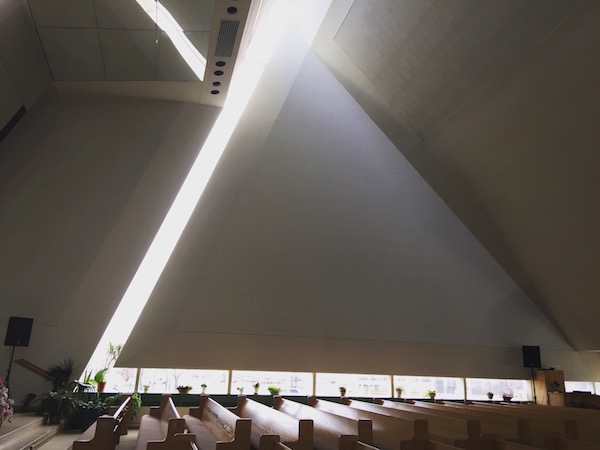
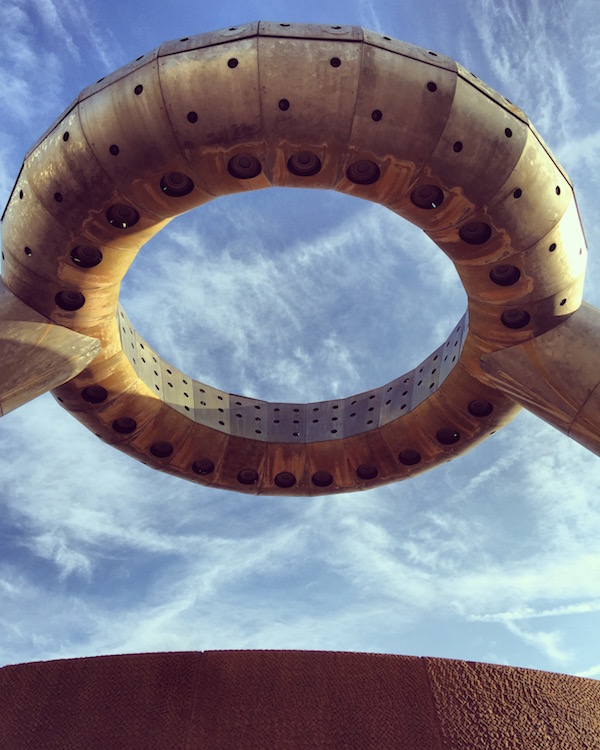
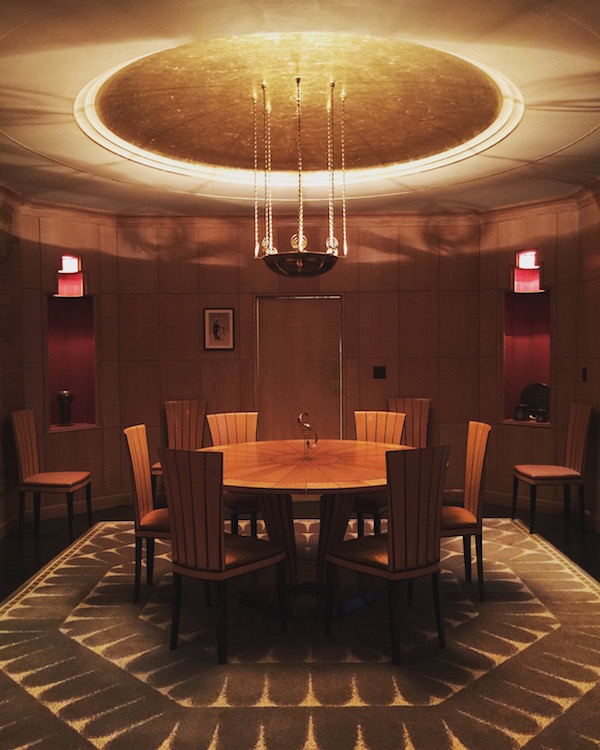
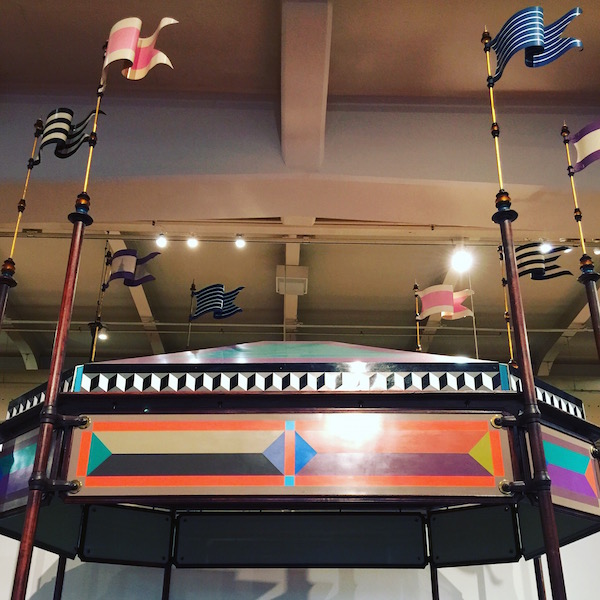
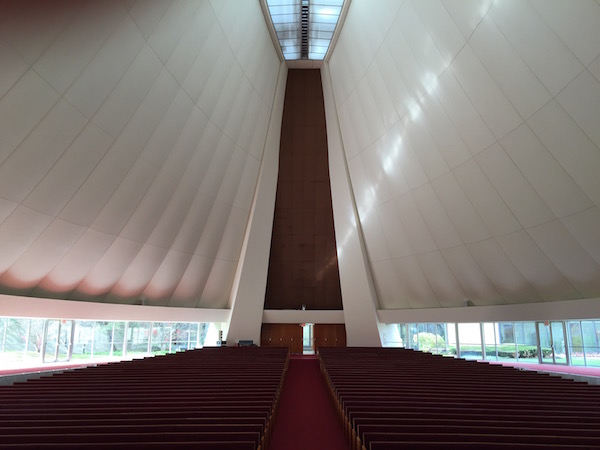
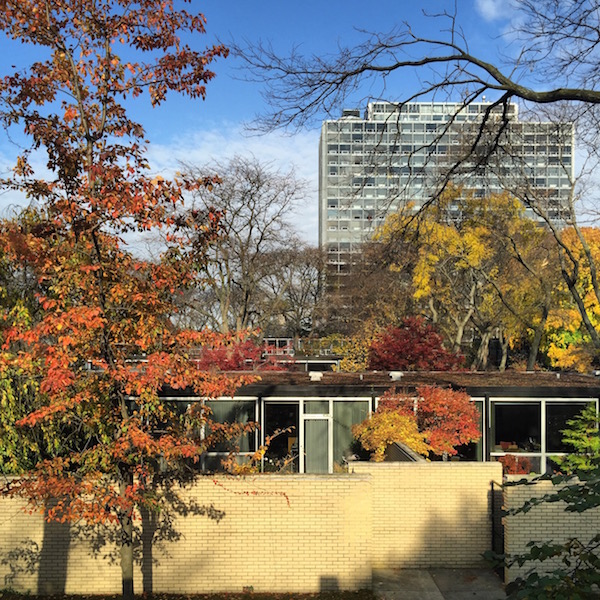
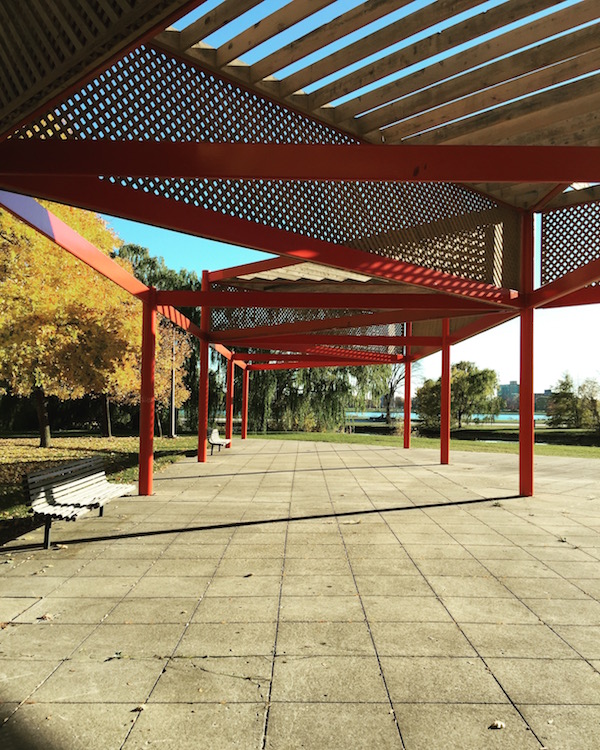
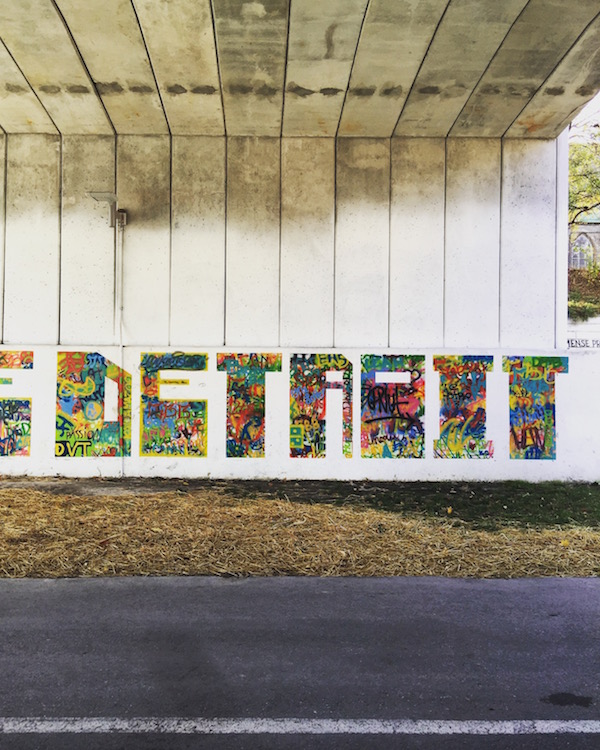
From the top: Yamasaki; Smith, Hinchman & Grylls; Birkerts; Noguchi; Eliel Saarinen; Eames; Yamasaki; Mies; Kiley; artist unknown in the Dequindre Cut.
Detroit Distilled: How the City's Past Could Inspire Its Future

Lafayette Park. Photo by Alexandra Lange via Instagram.
Lafayette Park, Detroit, is one of my favorite places in America. Designed by Ludwig Mies van der Rohe with landscape architect Alfred Caldwell and planner Ludwig Hilberseimer and built by Chicago developer Herbert Greenwald between 1956 and 1963, Lafayette Park consists of 24 single-story courtyard houses (with two to four bedrooms), 162 two-story attached co-ops, and three high-rise rental buildings, the Pavilion and the two Towers. The high-rises are silvery, the courthouses nestle behind buff brick walls, and the co-ops are framed in black steel with windows edged in stainless, providing material variety within the vertical and horizontal grids. The 78-acre site was declared a National Historic Landmark this summer.
But Lafayette Park is more than a design fetishist’s paradise. Its location and its landscape suggest ways of living in a city that are totally current, and its residents (many there for decades) are better linked to the rest of Detroit than the district’s self-containment might suggest. Detroit’s future may lie in building out the spaces between the structures it already has, making connections, not architecture.
David Adjaye Is Having A Moment: Will It Redefine Architecture?

Francis A. Gregory Neighborhood Library in Washington, D.C. Photo © Ed Sumner. Courtesy of Adjaye Associates.
We are indisputably having a David Adjaye moment. A retrospective of the work of the 49-year-old Tanzanian-born British architect just opened at the Art Institute of Chicago. The striking, bronzy shell of the National Museum of African American History and Culture in Washington is now complete. He’s mentioned in every article about the competition to design President Obama’s presidential library in Chicago. The public spaces of his $84 million Sugar Hill Development in Upper Manhattan, which combines 124 units of affordable housing with an early childhood education center and a children’s museum, are finally open. What sets his work apart, both for private clients and the public realm, is the importance of pattern. His work is a saturated, color-laden zig when so many other architects have zagged toward a faux lightness and ethereality.
Pattern in contemporary architecture becomes a simplistic way of convincing a community that a work is site-specific, that it “fits” despite being a different size, shape, material, or program from everything around it. Projects in African-American neighborhoods get kente cloth, the Southwest gets Navajo blankets, the Middle East gets mashrabiya geometries. All of these patterns can be meaningful, and acknowledging their history pushes architects more comfortable with unadorned surfaces toward ornament. But too often they engage only the surface, a skim-coating of context that justifies shapes the architects use anyway and use elsewhere.
Noguchi in Suburbia Vs. Noguchi in Nature
Photograph by Liz Ligon. Courtesy BBG/The Noguchi Museum.
The squat, mirror-glass office buildings by South Coast Plaza, in Costa Mesa, hard by the San Diego Freeway, look like a hundred other squat, mirror-glass office buildings scattered across greater Los Angeles. Most of the time, these buildings serve as a backdrop for nothing special, but Costa Mesa is different. There, the mirrors reflect Isamu Noguchi’s “California Scenario,” a little-known public plaza dotted with carefully placed trees, sculpture, mounds, and a meandering river. Noguchi spent decades trying to make something similar for New York City, but nothing ever happened. That chronicle of frustration provides a backdrop to the installation of fifteen Noguchi sculptures at the Brooklyn Botanic Garden (through December 14th), in conjunction with the thirtieth anniversary of the Noguchi Museum in Queens. It was fascinating to see Noguchi first in the epitome of bland office suburbia, and then in the Indian-summer lushness of the Botanic Garden.
Noguchi’s “California Scenario” is an essay on the landscape of California in seven parts. “Water Source” is a thirty-foot-high triangular sluice, with water flowing into a curving stream that is sunken below the sandstone plaza. The stream leads all the way to a flattened granite pyramid symbolizing civilization, called “Water Use.” A circular mound, dotted with desert plants, stands for one part of the state, while a wedge-shaped hill, circled by redwoods, represents another. A knotty stone sculpture called “Spirit of the Lima Bean” refers to the original use of the land under the South Coast development, while the circular “Energy Fountain” creates a rush of whitewater over stacked granite blocks. I’m not really sure what “Land Use,” the ivy-covered hill placed in front of 3200 Park Center Drive is doing. It does screen the door of the building, further separating Noguchi’s space from that of business.
Power Positions
The Draper home in Ossining in "Mad Men." Courtesy AMC.
From 1959 architect Philip Johnson would lunch at a corner table in the Grill Room, part of the Four Seasons restaurant in the Seagram Building he designed. Contemporaries Frank Lloyd Wright and Henry Dreyfuss held court at the Oak Room in New York’s Plaza Hotel. How can Johnson’s decision to make his own Oak Room be interpreted as anything other than a power play? Here everyone had to sit, literally, at his table. Clients, colleagues, supplicants, artists: on his own turf, the architect trumped them all. And the table itself laid bare an unspoken hierarchy, depending on where you sat.
All tables do: choose a seat close to or far away from the seat of power and you reveal your sense of place. Take the seat you’ve been allocated and you find out where others place you. If you don’t like your position you can move, or, if an Arthurian knight, fight. It is more subtle, though, to change the rules of engagement by changing the shape of the board.
Frank Gehry's Los Angeles: A Retrospective in Buildings
Frank Gehry's headquarters for Chiat/Day, in Santa Monica. Photo by Elizabeth Daniels.
To get in to Frank Gehry’s Loyola Law School (1980-90) you have to drive around the block a few times. What most published photos of the campus, near downtown Los Angeles in Westlake, don’t show is that the only entrance to this “academical village” is through the parking garage. The enclave of buildings—cartoon versions of colonnade, grove, tower, and chapel—present their backs as a wall to the street, hiding their postmodern flourishes and denying passers-by even a ceremonial gate through which to peer. If you are looking for late-model luxuriant Gehry, you won’t find it here. What you will see is one of Frank Gehry’s first attempts to create an urban place, with an artful mix of foreground and background buildings, sun and shade, gentle ramps, and aggressive switchback staircases.
The most iconic element of the Loyola campus is Merrifield Hall, a free-standing brick building with a tidy, child’s-drawing gable and four stucco columns on its south side. The columns are unencumbered by capitals and unattached to the hall. They are just there as a three-dimensional symbol of our collective image of what the law looks like, set at the working center of the open space.
So many elements of Loyola seem meaningful in retrospect: the tiered plywood acoustical panels hung from the ceiling of Merrifield read as a low-budget sketch of Disney Concert Hall’s billowing wood waves. The blonde-wood interior of the glassy chapel points to Gehry’s admiration for Alvar Aalto and transports you briefly to a more northern climate. Meanwhile, the openwork bell tower has no bell, and Gehry would repeat those exposed Paul Bunyan-goes-to-Japan timbers for Chiat/Day (↑). You’ve seen Gehry’s three office buildings in three materials in Dusseldorf, and you’ve seen his three condos in three materials on Indiana Avenue in Venice. Here, the parking structure is covered in overlapping silvery sheets, another background building is bright yellow with a grid of tiny square windows, and a third is terra cotta. The metal staircase juts and glints just like the chain-link fence lifted from Gehry’s Santa Monica house (↓) and reaches up to an off-kilter gem-like atrium (ditto). Nothing aligns, so a walk through the block bounces you from one material to another, making the space feel bigger than it is. I realize, after I walk out, that this is Gehry’s Stata Center at MIT turned inside out: His first mistake in that pushy, cacophonous interior was trying to recreate a Los Angeles block indoors in Cambridge, Massachusetts.
"Grace Farms is a trophy building, not a light-on-the-land wilderness retreat"

Grace Farms is beautiful. The centrepiece of the site is the sinuous 83,000-square-foot, $67 million building called The River, designed by SANAA and set on 80 acres of open space in tony, architecturally-exceptional New Canaan, Connecticut. The River flows downhill, 1,400 feet long, covering a 44-foot elevation change.
The aluminium roof, which glows in daylight like iridescent ceramic tile, covers indoor spaces on four levels: the sanctuary up top, the library one level below, the commons beyond, bottoming out in a bi-level sunken gymnasium, surely among the most spectacular places to play a pick-up game in the country, if not the world.
Modern Family: Louis Kahn, Revamped
Photo by Pieter Estersohn.
When Steven and Toby Korman hired architect Louis Kahn, in 1971, he was at the peak of his career: He was working on the Kimbell Art Museum, in Fort Worth, Texas; the Phillips Exeter Academy Library, in New Hampshire; and the National Assembly Building of Bangladesh, in Dhaka; and had already finished the Salk Institute for Biological Studies, in La Jolla, California (now on many lists of the best 20th-century American architecture). Today Kahn is also known for the Franklin D. Roosevelt Four Freedoms Park, on New York’s Roosevelt Island, whose 1974 design was completed posthumously in 2012. A charismatic teacher, Kahn had moved architecture away from steel and glass and toward simple, monumental forms, usually made from concrete, brick, and wood. The Kormans had been watching Kahn’s work in Philadelphia, where his practice was based, and pursued him through mutual friends for about a year to be their architect. Steve Korman had run his family’s building-supply business in the 1960s (he later managed their many rental properties), which gave him an appreciation for Kahn’s care with materials.
Even as he built significant public works, Kahn also designed houses (nine were built in and around Philadelphia alone), listening closely to clients and translating their desires into tailor-made homes. According to William Whitaker, coauthor of The Houses of Louis Kahn and curator of the Architectural Archives of the University of Pennsylvania, “Kahn often assigned the design of a house to his students at Penn as a way to test their abilities. A house is ‘extremely sensitive to internal need,’ he said.” During the multiyear design process for the Kormans’ house, Kahn spent a lot of time discussing the family’s home life, which included “three boys and a dog and a goldfish.” In a four-page document the Kormans prepared for the architect, they wrote, “We would love an easy-to-care-for, warm, hospitable, exciting, home to raise three boys.”
LA's Broad Museum: A Downtown Destination Fit for the Instagram Age
Photo by Benny Chan. Courtesy the Broad Museum and Diller Scofidio + Renfro
Gefilte fish. Tripas. Cheese grater. Packing material. Scratching post. Coral. Except for the last, provided by the building’s architect, Diller Scofidio + Renfro, all of these visual allusions suggest that Los Angeles’s new Broad Museum—which houses Eli and Edythe Broad’s 2,000-piece contemporary art collection—is in stiff competition for the free-association sweepstakes waged by its neighbor, Frank Gehry’s Disney Concert Hall. Who can forget the sweeping romanticism of Herbert Muschamp on Gehry’s Guggenheim Bilbao (the older brother of Disney): “It’s a bird, it’s a plane, it’s Superman. It’s a ship, an artichoke, the miracle of the rose.”
Critics searching for what the Broad looks like aren’t searching the skies or the waves, but the supermarket aisles. The museum, which opened September 20, is a three-story box clad in porous panels made of white glass-fiber-reinforced-concrete (GRFC). It’s not meant to be romantic, organic, or referential—except perhaps to 1960s Los Angeles, when the white, porous concrete facades of Malcolm Leland’s American Cement Building (1964) and Eliot Noyes’s IBM Aerospace Headquarters (1963) attempted to provide shade, pattern, and roadside identity without BIG HONKING LETTERS. Leland and Noyes both started their patterns one story up. Without an office building’s height to play with, Diller Scofidio + Renfro have reintroduced their favorite wedge as an entrance detail, lifting the curtain at each of the building’s four corners, inviting you to scoot inside.
On X
Follow @LangeAlexandraOn Instagram
Featured articles
CityLab
New York Times
New Angle: Voice
Getting Curious with Jonathan Van Ness